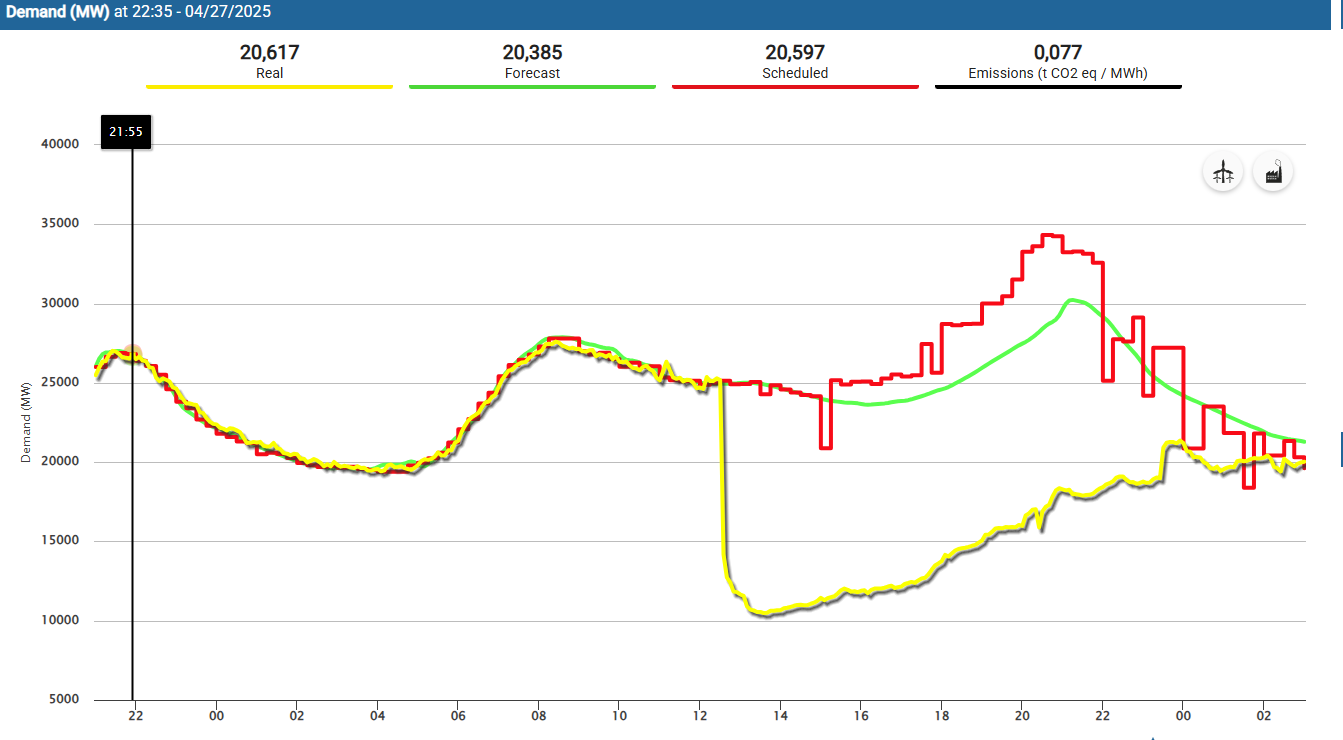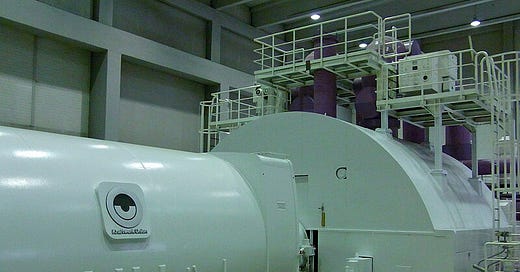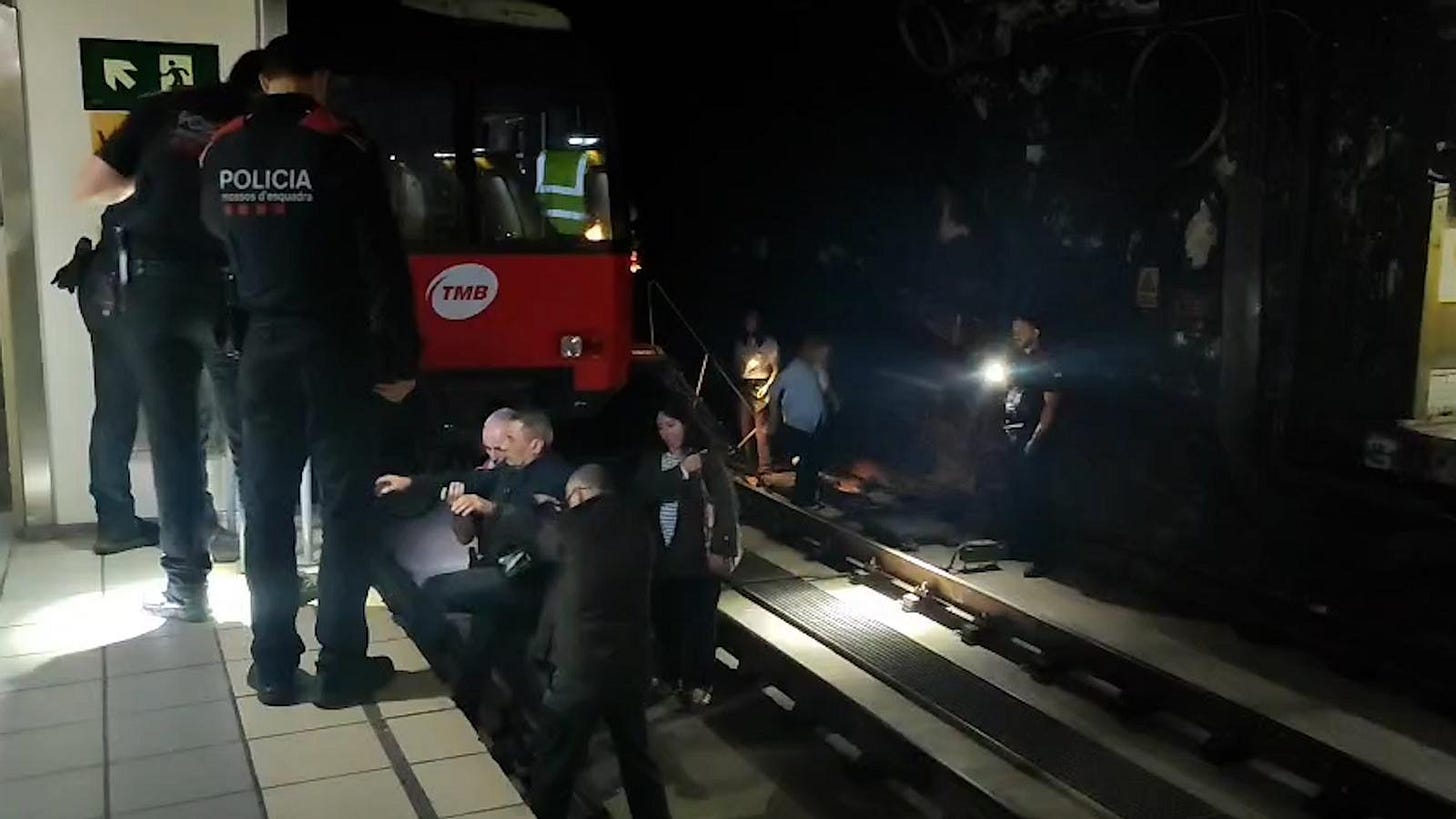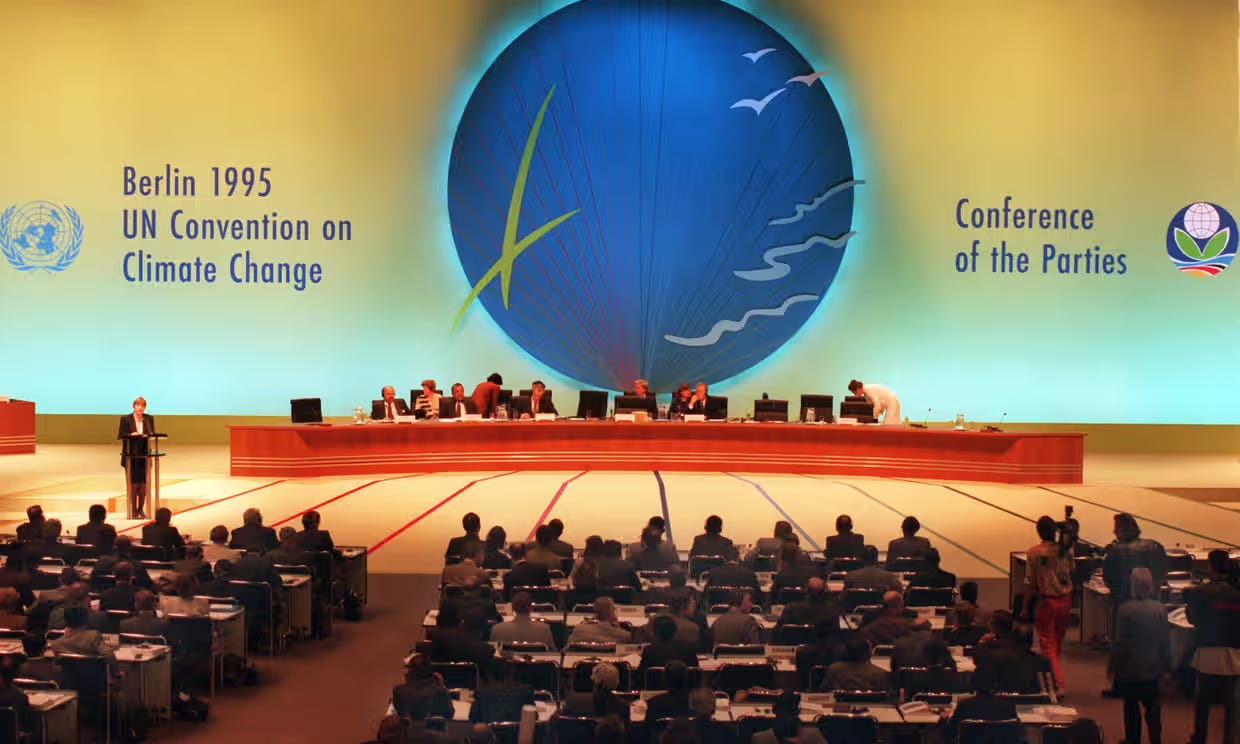Comparing Spain’s and Portugal’s recent blackout to the Soviet famines of the 1930s might sound like an outrageous exaggeration. After all, “only” five people died, and the power came back.
But take a closer look at how the narrative around it is being spun and the parallels become hard to ignore. Inconvenient questions are dismissed and the blackout is used to justify doubling down on the very policies that have helped cause it.
The Soviet famines were, in part, the result of Lysenkoism. Trofim Lysenko, a state-backed biologist, rejected modern genetics and claimed crops could be “educated” to grow under new conditions. He promoted pseudoscientific techniques like vernalization and dismissed Mendelian inheritance as capitalist propaganda.
His methods didn’t work. Crop yields plummeted and agricultural mismanagement deepened food shortages, especially in the fragile postwar years of collectivization and recovery.
But instead of course correcting, the Soviet leadership doubled down. Lysenko retained Stalin’s personal backing and was lionized as a revolutionary genius. More than 3,000 opposing biologists were dismissed, imprisoned, or executed.
The science had failed but the narrative was too entrenched to abandon. Less dramatic in scale, we’re seeing something eerily similar today with the rise of renewables. The April 28 blackout, which left nearly 10 million without power, made that clear.
No, It Wasn’t the Weather
Official statements first blamed fringe explanations like “a rare atmospheric event” or a cyberattack. But the latter idea could be dismissed almost immediately:
traders gave it less than a 6% chance from the start.By the next day, Spain’s grid operator admitted that a sudden drop in solar power generation had triggered an automatic grid shutdown. A kind of system-wide circuit breaker designed to prevent deeper damage.
With complex systems, there’s almost never a single cause for failure. From the Challenger explosion to Chernobyl, major disasters usually stem from a cascade of small problems that align in the wrong way, whether technical, human, or procedural. It may take weeks before investigators fully pinpoint what went wrong on April 28.
But one conclusion is already hard to avoid: renewables contributed to the blackout. And that’s because of something called grid inertia. Let’s break down what grid inertia is and why talking about it is as toxic to Net Zero advocates as Mendelian genetics was to Lysenko.
(I covered grid inertia back in February in The Green Energy Time Bomb. If you’ve read that piece, feel free to skip the next section.)
Inertia: Selling Back What Was Once Free
In Europe, the grid runs at 50 Hertz with a very narrow tolerance band. If demand exceeds supply, frequency drops. Fall too far and parts of the grid shut down automatically. If supply overshoots demand, frequency rises, risking damage to infrastructure and, as a consequence, triggering disconnections as well.
Traditionally, the system has a buffer: inertia. The kinetic energy stored in the massive spinning turbines of coal, gas, and nuclear plants. These turbines don’t just generate electricity, they act as shock absorbers. When the system is thrown off balance, their momentum buys time. It slows the destabilization, gives operators a chance to react, and keeps the grid within its tolerance band.
However, wind and solar don’t have the kind of feedback mechanism. They feed electricity into the grid via inverters. And that means they don’t provide inertia.
Renewables require expensive synthetic inertia like Zenobē’s £750 million (US$995 million) battery storage project in Scotland. This system will provide roughly 5–10% of Britain’s total inertia requirement. At least until the batteries wear out in 15 years and need replacing.
Based on what we know, it’s reasonable to assume the scale of the blackout was driven by Spain’s high share of renewables.
👀 Reading this from a forwarded email? You can get The Brawl Street Journal straight from the source. It’s free…
Narrative First, Grid Second
When the blackout hit, Spain was running on 70% wind and solar. That meant only a small part of the grid was supported by spinning turbines that provide inertia.
So when something went wrong, whatever the initial trigger was, the frequency changed too quickly, and the system couldn’t absorb the shock. There wasn’t enough time to react, triggering a chain reaction that shut down the grid to prevent further damage.

The official response to the blackout said nothing about grid inertia. Instead, The Guardian ran with: “Minister warns against blaming Spain’s blackout on renewable energy.” And Politico dutifully reported that “Spanish officials identified a freak incident in the electrical grid.”
A “freak incident” is a curious phrase, considering engineers have been warning about this exact scenario for over a decade. And a 2020 study in the journal Energy stated bluntly:
Appropriate levels of system rotational inertia to ensure system stability, previously inherent in synchronous areas across Europe, can no longer be assumed.
Even the parent company of Spain’s grid operator wrote in February in its annual report that managing the system was becoming harder:
The high penetration of renewable generation without the necessary technical capabilities in place to keep them operating properly in the event of a disturbance [...] can cause power generation outages, which could be severe.
Yet, Spain’s energy minister appears to have taken the blackout as a cue to accelerate the strategy that contributed to the situation:
We do have sun and wind and I think a lot of businesses share our commitment to transforming our energy system and making it more and more renewable.
News outlets did eventually mention inertia. But the takeaway was striking. Bloomberg concluded:
Spending programs need to be supercharged to prevent the blackouts that can cripple nations and inflict long-term damage on perceptions about clean energy.
Note the phrasing: “damage on perceptions.” It’s not about delivering affordable energy anymore, it’s about protecting the narrative. Never mind that Europe’s energy prices have already climbed to 2x–4x U.S. levels, with residential rates 5x–7x higher than in China and India.
Spain’s most-read newspaper El País frames the blackout as a “culture war over nuclear energy,” noting that the country’s EU-endorsed roadmap calls for phasing out its five nuclear plants.
Rather than address the underlying physics, the debate is reduced to a left-vs-right issue, casting pro-nuclear views as “far right.” This kind of spin resembles Lysenko’s playbook. Discredit the science by politicizing it:
Mendelism-Morganism, Weissmanist neo-Darwinism... are not developed in Western capitalist countries for the purposes of agriculture, but rather serve reactionary purposes of eugenics, racism etc.
But such framing efforts waste valuable time that should be spent on the real issue.
The Illusion of Progress
The electrical grid is a non-linear system, its behavior is complex and hard to predict, especially under stress. No country has yet managed to run a large-scale grid entirely on renewables and synthetic inertia. Which is why we don’t fully understand how such a system behaves at scale.
While the data isn’t conclusive, it’s likely that France’s nuclear fleet acted as a stabilizing buffer that helped contain the April blackout within the Iberian Peninsula.
And that reveals a fundamental contradiction. Countries like Spain and Germany want to go all-in on renewables. But that strategy may only function if their neighbors don’t follow suit. Because without nearby grids providing inertia and stability, there’s no one left to absorb the shocks. The entire system becomes fragile.
And as for synthetic inertia? The tech isn’t there yet. Amprion, Germany’s second-largest grid operator, put it plainly: “The main obstacles [is] the lack of technology maturity.”
“But shouldn’t we at least try to save the planet?” you might ask. If you look at the numbers honestly, the answer is: no.
Since 1995, the share of fossil fuels in global energy use has barely budged—from 86% to 81% in 2023. After trillions spent, countless pledges, subsidies, and summits that’s a 5-point drop in nearly three decades.
The EU’s sacrifices weaken the grid, raise costs, and do nothing to curb global emissions. Because fossil fuels Europe shuns are simply burned elsewhere, often in less efficient systems. In short: physics doesn’t care about the narrative. And neither does the global energy market.
The obvious question is whether EU leaders are corrupt or just clueless. Perhaps the real issue is something worse: they’re trapped in a system that rewards the wrong metrics.
Build Gigawatts Now, Ask Questions Later
The concept of climate change was introduced into mainstream Western discourse in 1995, the year of the first UN COP meeting. That’s when the idea of Net Zero became official policy, and when the obsession with installed renewable capacity began.
Go to any renewables conference over the past two decades, and the conversation is always the same: how do we hit the annual capacity targets? That was the yardstick for success. And it was also where the money was.
Reaching those targets is how Net Zero companies made their profits. It’s how policymakers justified subsidies. No one paid you for worrying about grid inertia. It wasn’t part of the performance metrics. No one handed out big grants for asking what happens when renewable capacity exceeds a critical threshold.
Energy officials in ministries, parliaments, and Brussels built their careers on chasing these capacity metrics.
And now that the system is showing cracks, facing the consequences would mean admitting they helped build a system that’s making everyone poorer and the grid less stable. That kind of cognitive dissonance is hard to live with.
Which is why you shouldn’t expect them to change course. Instead, they’ll spend hundreds of billions on synthetic inertia, grid-forming inverters, digital balancing schemes. All attempts to retrofit a broken design in the hopes this patched-up system doesn’t fall apart entirely.
Holding On
Yes, the cracks are visible now. Even Tony Blair came out this week to say that current Net Zero policies are “doomed to fail.” A rare dose of honesty, even if it was likely just a ploy to help Labour fend off Reform in the local elections.
And yes, blackouts like the one in Spain may help accelerate the collapse of the narrative. But if history is any guide, don’t expect a quick turnaround. It took about 20 years after the 1930s famines for Lysenkoism to start fading. It wasn’t officially discredited until 1964.
Coincidentally, 20 years from now is roughly when most of today’s Net Zero policymakers will have retired. Right on schedule.
Send this to anyone considering a career in ESG!
📨 People in boardrooms, energy desks, and hedge funds keep forwarding this. Stop getting it late — subscribe now!
Already subscribed? Thanks for helping make BSJ quietly viral.









You’re a superb addition to Substack. Your work is excellent. We will link to this piece in a post about how Substack content creators mauled legacy media to death covering the Spain fiasco.
Great work!
One day splinter groups are all going to come together and work to improve economies. An economy definition being the improvement of the quality of life of those living within the state or environment.
At the moment the measurement of success, at the micro and macro levels, is the distribution of FIAT currencies. Once this changes and the real definition of an economy is re implemented these problems will be solved.
The future of energy supply is not renewables. It is not Nuclear. It is not synthetics or Coal. It is a mixture of all.
The average human being believes that a better quality of life, the basis of an economy, is the ability to be amused to death.